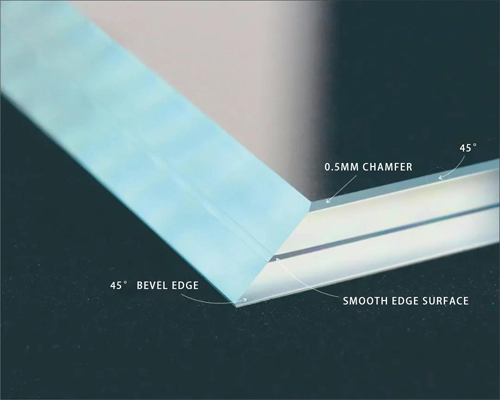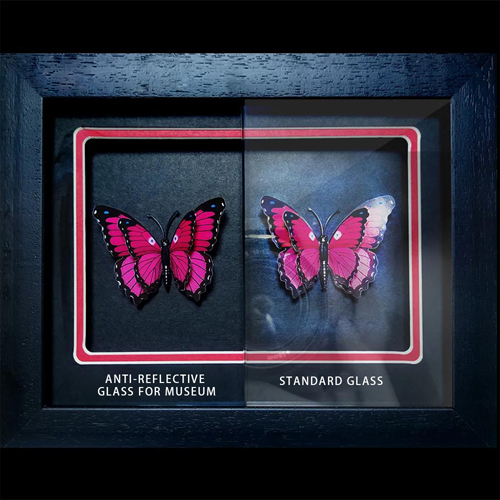
With the world’s museum industry awareness of cultural heritage protection, people are increasingly aware that museums are different from other buildings, every space inside, especially the exhibition cabinets directly related to cultural relics; each link is a relatively professional field. In particular, the display cabinets have quite strict control for glass light transmission, reflectivity, ultraviolet transmission rate, optical flatness, as well as edge polishing processing fineness.
So, how do we distinguish and recognize which kind of glass is needed for museum display cabinets?
Museum display glass is all over the museum’s exhibition halls, but you may not understand or even notice it, because it always tries to be “as much as transparent” so that you can see the historical relic better. Although humble, museum display cabinet anti-reflective glass has an important role in the display of cultural relics, protection, safety and other aspects.
Museum display glass has long been confused in the architectural glass category, in fact, regardless of product performance, process, technical standards, and even installation methods; they belong to two different categories. Even museum display glass does not have its own national standard of production, can only follow the national standard of architectural glass. The application of this standard in architecture is completely fine, but when applied in museums, the glass related to the safety, display and protection of cultural relics, this standard is clearly not enough.
The distinction is made from the most basic dimensional criteria:
|
Deviation Content |
Deviation Average |
|
|
Anti-Reflective Glass For Museum |
Building Glass For Architecture |
|
|
Length (mm) |
+0/-1 |
+5.0/-3.0 |
|
Diagonal Line (mm) |
<1 |
<4 |
|
Glass Layer Lamination(mm) |
0 |
2~6 |
|
Bevel Angle (°) |
0.2 |
— |

Each piece of qualified museum display glass should meet the following three points:
Protective
Museum cultural relics protection is the top priority, is in the exhibition of cultural relics and cultural relics contact recently, is the last barrier to the safety of cultural relics, cultural relics micro-environment, to prevent theft, prevent UV hazards, avoid accidental damage to the audience and so on play a vital role.
Display
Cultural relics exhibition is the core “product” of the museum, the exhibition effect of the advantages and disadvantages of the audience’s viewing feelings directly affect, is the barrier between the cultural relics and the audience, but also the audience and the cabinet cultural relics exchange medium, clear effect can let the audience ignore my existence, and cultural relics direct communication.
Security
Museum display glass itself security is a basic literacy. The safety of the museum exhibition cabinet glass itself is the basic quality, and cannot cause damage to the cultural relics, the audience for its own reasons, such as toughened self-explosion.

Saida Glass focuses on glass deep processing for decades, designed to provide customers with beautiful, ultra-clear, environmentally friendly, safe high-quality products.
Media Contact
Company Name: SAIDA GLASS CO., LTD
Email: Send Email
Phone: +86 769 8786 6665
Address:No.13 Tangliang 3rd Road, Tangxia
City: Dongguan 523710
Country: China
Website: https://www.saidaglass.com/
